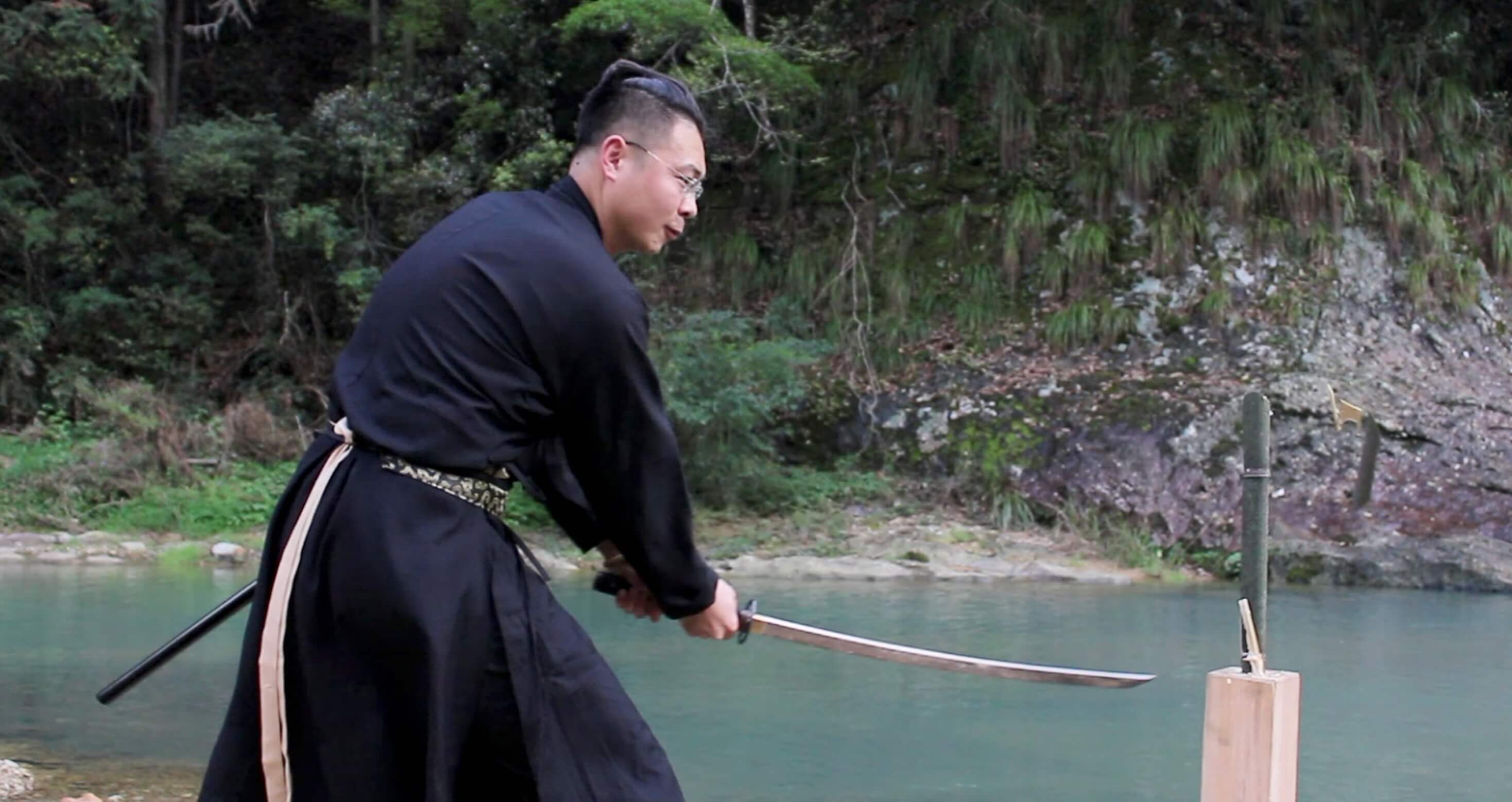How to Choose a Katana That Suits You
In "Zatoichi," when the blind wanderer draws his katana, it's as if the sword grows eyes, or rather, the katana becomes the samurai's eyes.
The blind swordsman Ichi, portrayed by Takeshi Kitano, walks through perilous alleys with his ever-present katana. Once unsheathed, the blade strikes with lightning speed, slaying enemies in an instant. The blood-stained sword trembles in the night, exuding a breathtaking beauty that perfectly embodies the aesthetics of violence.
Choosing a satisfactory katana is not an easy task. Nowadays, most katanas are non-customized and are not specifically made according to the user's height and other characteristics. Today, We will introduce some methods for selecting a katana. You can determine your purchasing direction based on the shape and usage of different types of swords.
First: For a blade length of 2 shaku 4 sun (approximately 72.7 cm), the total length of the sword should be 3 shaku 2 sun (approximately 97 cm). This means that the handle should occupy one-fourth of the total length, with the remaining three-fourths being the blade and the scabbard.
Second: If the handle length is 8 sun (approximately 24.2 cm), then the ideal length of the tang should be around 7 sun (approximately 21.2 cm). The thickness of the tang also affects the balance and weight distribution of the blade.
Third: The width of the blade at the base (measured from the back of the blade) should not exceed 3.5 cm, and the width at the tip should be within 3 cm (approximately 8.5 sun).
Fourth: The thickness of the blade at the base (measured from the back of the blade) should be about 0.6 cm, and the thickness at the tip should be within 0.5 cm. The thickness at the base and tip should not be the same. If they are, as seen in some new swords, it may be advantageous in battle but will affect the sharpness of the cut. Essentially, the blade should resemble the proportions of ancient swords or those of the revival period to ensure good cutting performance.
Fifth: A sword with a thicker blade base is effective for cutting hard objects (such as helmets, antlers, or bamboo), but it may get stuck when cutting softer targets, resulting in poor cutting performance on rolled tatami mats. On the other hand, a sword with a thinner blade base and standard width as described above will perform well on various cutting targets. However, if the user lacks skill and the angle is incorrect, the blade may bend if it hits the target side-on. The thickness of the blade base undoubtedly affects the blade's flexibility.
Sixth: A sword with a fuller (blood groove) will produce a sound as it cuts through the air. Opinions on this sound vary; some people dislike it, while others enjoy it. Most practitioners of cutting techniques use swords without a fuller. In reality, having a fuller does not affect cutting performance but does impact the weight balance and flexibility of the blade. If the fuller is too deep, it will affect the blade's strength, making it primarily a matter of aesthetics and sound rather than practicality.
Seventh: After removing all fittings, the bare blade should weigh around 800 grams. Exceeding this weight is not conducive to training sword techniques.

Eighth: The hamon (blade pattern) should ideally occupy about one-fourth of the blade's width. If the hamon is too large (indicative of excessive high-temperature quenching), the blade can become brittle and prone to breaking, negatively impacting cutting performance. For practical swords, it is advisable to choose a simpler, straighter hamon (indicative of shallower quenching) rather than an ornate, irregular one, as this will result in better cutting ability.
Ninth: There should be two mekugi-ana (peg holes) in the tang and handle, with two mekugi (pegs) installed for greater safety. A single peg is less secure for practical use.
Tenth: The ideal length for a practical sword is between 2 shaku 2 sun and 2 shaku 4 sun. Swords longer than 2 shaku 5 sun can cause a deviation in the angle of the grip and insufficient force application, leading to the blade bending or getting stuck in rolled tatami mats.
When it comes to the fittings of the sword, many practitioners of Iaido prefer the "Tensho Koshirae" style, which features a square-shaped kashira (pommel). However, for actual cutting practice, the grip technique involves the right hand slightly away from the tsuba (guard) and the left hand gripping the lower end of the tsuka (handle), with the little finger securing the bottom. Therefore, a rounded "Higo Koshirae" kashira is more suitable for real cutting.
Currently, 80-90% of the katanas owned by enthusiasts are ready-made rather than custom-made according to the user's specifications. It is rare to find a sword that perfectly matches the owner's requirements in terms of balance and length. Therefore, some modifications may be necessary.

First: If the weight of the blade feels too forward-heavy, towards the cutting edge and tip, modify the handle. Inserting lead weights between the tang and the kashira can change the weight balance.
Second: If the blade is too long, grind down the area covered by the habaki (collar) to shorten it, a process known as "Suriage." The same method can be used to adjust the length if the tang is too short.
Third: If the blade feels too heavy, consider ordering one with a fuller (blood groove) to reduce the weight.
























Deja un comentario
Tenga en cuenta que los comentarios deben aprobarse antes de que se publiquen.